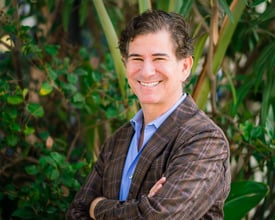It's Not the Economy, Stupid
How can we be expected to grow and create jobs, many executives wonder, when we are shrinking?
Despite a slight easing on the unemployment rate, a quarter million Americans lost their jobs last month, and job prospects for those out of work look bleak for the foreseeable future. Policymakers and citizens alike are concerned with how we can reduce the rate of unemployment—no easy feat when balanced with the need to slash expenses.
However, focusing on unemployment is exactly the wrong thing to do. Yes, the numbers are staggering. But they only tell part of the story, and they do not offer a solution for relieving the economic chaos.
Instead, there is a more effective way to grow—a way that is free, does not rely on a government bailout, and has the potential for massive societal impact. American executives should turn to the 140 million who have jobs, and find practical ways to inspire them in their work, to empower them to innovate us out of a mess.
ENGAGE EMPLOYEES
Based on extensive, long-term research, Gallup has determined that less than 30% of the corporate workforce is truly engaged< in its work. That's less than 30% of employees who work with passion and feel a profound connection to their companies. Yet employee engagement leads to increased customer engagement, which leads to real revenues and, eventually, more job opportunities for others.
Unfortunately, it seems that amid the crush of an urgent economic reality, executives and managers have overlooked some elementary tasks, such as making sure employees know what is expected of them and allowing them to use their talents in their roles. Yet the need to engage employees better is especially crucial during a recession, when mantras such as "do more with less" can madden employees who must pick up extra duties after their colleagues are laid off, but who are offered no tangible financial incentive to innovate.
Engagement serves as an intangible incentive — one that can be more valuable than any money can provide.
LEARNING FROM BEST BUY
Take, for example, one store in the multibillion-dollar electronics retail chain, Best Buy. Executives evaluated employee engagement and discovered the store was middling at best. The poor score was affecting morale, employee turnover, and store profits.
After polling the employees for solutions, the management implemented some significant institutional changes, like a "team close," so all team members felt jointly responsible for the nightly store closing, and not just an unlucky few.
As a result of management's listening and making some bold decisions, employee engagement improved, and the store substantially lowered employee turnover and increased profits. Then, the changes were scaled across the 1,200-store chain. For every one-tenth-of-a-point increase in employee engagement, each Best Buy store increased profits by $100,000 a year.
So consider all of those who aren't inspired to put their hearts into their work. Worse, nearly 20% are "actively disengaged," trying to undermine others' productive work. This is not merely a caricature of Office Space or Dilbert. Tens of millions of people deliberately clock in every day with the intention of holding back U.S. corporations' ability to compete and innovate.
This is a shame—and yet it is an opportunity too.
Consider this a call to arms for all leaders. Imagine the results if we were to double employee engagement at our organizations within 18 months, from 30% to 60%. Through a disciplined effort to increase the connection and commitment of our employed workers, our organizations can innovate and create new solutions. This is the surest way to lower those devastating unemployment numbers. And we have no excuse—not even a bad economy.
Krisztina Holly is vice-provost for innovation and executive director of the USC Stevens Institute for Innovation at the University of Southern California. Jim Clifton is chairman and CEO of Gallup. Reprinted with permission.
 Tony Greenberg
Tony Greenberg
 Ivan Nikkhoo, Managing Partner – Navigate Ventures
Ivan Nikkhoo, Managing Partner – Navigate Ventures Michael Sherman, Neil Elan and Karine Akopchikyan
Michael Sherman, Neil Elan and Karine Akopchikyan Alejandro Guerrero
Alejandro Guerrero Eric Eide, Alliance for SoCal Innovation
Eric Eide, Alliance for SoCal Innovation Kevin DeBre
Kevin DeBre Braven Greenelsh
Braven Greenelsh Rob Freelen, Los Angeles Market Manager, Silicon Valley Bank
Rob Freelen, Los Angeles Market Manager, Silicon Valley Bank Braven Greenelsh
Braven Greenelsh Kaäre Wagner, Silicon Valley Bank
Kaäre Wagner, Silicon Valley Bank Al Guerrero, Silicon Valley Bank
Al Guerrero, Silicon Valley Bank Rob Freelen, Los Angeles Market Manager, Silicon Valley Bank
Rob Freelen, Los Angeles Market Manager, Silicon Valley Bank Sid Mohasseb
Sid Mohasseb William Hsu
William Hsu Braven Greenelsh
Braven Greenelsh Dinesh Ravishanker
Dinesh Ravishanker Dina Lozosfky
Dina Lozosfky Melinda Moore
Melinda Moore Ivan Nikhoo
Ivan Nikhoo Jaspar Weir
Jaspar Weir Erik Caso
Erik Caso Tracy Olmstead Williams
Tracy Olmstead Williams Dave Berkus
Dave Berkus Bernard Luthi
Bernard Luthi Peter Cowen
Peter Cowen Nick Hedges
Nick Hedges Eric Larsen
Eric Larsen Michael Terpin
Michael Terpin Steve Reich
Steve Reich